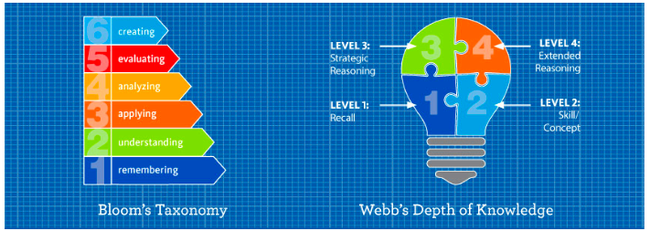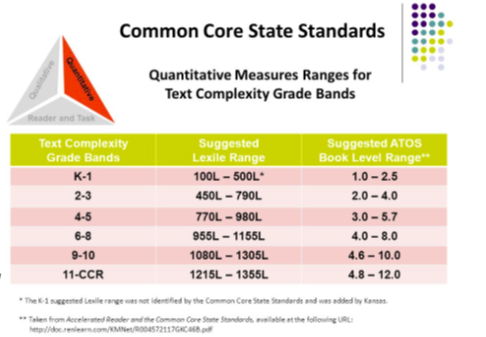Support for Selecting an Anchor Text
Goals of this Module
While working through this mini-module on selecting a high-quality anchor text, educators will:
- Examine the alignment of their anchor text with their standards
- Evaluate if the text is of appropriate complexity for their students
- Analyze supplemental resources that will support students
- Connect all instructional components by ensuring aligned assessments
What is an anchor text?
The anchor text is the main text that will be used to teach content to your students. While texts can take on many forms (images, videos, charts, diagrams and etc), a literacy-based lesson seeks to use complex texts that increase student exposure to at-grade level reading opportunities.
This text should be aligned to the content standards, evaluated for appropriate complexity, supported by supplemental materials and assessed for student comprehension.
A high-quality anchor text is worthy of multiple examinations and will be the key to a successful lesson or unit. Taking the time to select an anchor text is one of the most important steps.
Some examples of anchor texts include rich historical texts, such as:
- President Kennedy’s Rice Stadium Moon Speech
- Watson and Crick’s publication of proposed DNA structure
- George Washington Carver’s Master’s Thesis “Plants as Modified by Man”
Selecting an Anchor Text
Questions to Consider When Selecting a Quality Anchor Text
Is your anchor text aligned to your standard?
What is the complexity of your anchor text?
What supplemental resources exist (or need to be developed) that will help your students access the text with increasing independence?
How will you assess your students’ understanding of the anchor text?
1. Is your Anchor Text Aligned to Your Standard? What are you going to teach?
Deconstructing your standard is a great place to begin.
- Content of the standard: One way to deconstruct the content of the standard is to highlight the verbs of the standard (what are students doing) with one color and the nouns (how are students showing knowledge) with another color. This can help you in choosing vocabulary you will teach later.
- Complexity of the standard: Take a look at both Bloom's Taxonomy and Webb's Depth of Knowledge to help determine how complex the standard is and how complex your text should be.

2. What is the Complexity of the Anchor Text? How Difficult is it for Students to Read?
The anchor text should be of appropriate complexity. Common Core State Standards (CCSS) for Literacy support students in reading grade-level complex texts.
- Quantitative measurement of the text: Can be done with many different tools that measure vocabulary, sentence length and other features that computer programs can measure. One of the easiest tools to use is the ATOS Text Analyzer. It’s free and analyzes text that you copy/paste or files you upload. There are scales to determine if the text is on grade level.

- Qualitative measurement of the text: - this takes into account more subtle features of a text and uses the teacher’s knowledge of their students to analyze the text. This includes features such as use of graphics, author’s purpose and required background knowledge. This rubric is an example that can help.
3. What Supplemental Resources Exist or Need to be Developed? How can I help my students be successful?
CCSS Literacy standards seeks to support students in performing analysis with increasing independence over the school year. Your anchor text should have features or resources to help students independently access it. Below are two of many ways that teachers can support this:
Features provided by the original author of the anchor text:
- Diagrams that support the text
- Bolded or special print (italics, underlines) to support vocabulary
- Author-provided vocabulary support such as sidebars, appendices or footnotes
- Texts that are broken into sub-components with author-provided headings/titles
Features provided by the teacher to supplement the text:
- Supporting texts (written, video, diagrams) that may provide background information, increase engagement, or provide different reading levels (scaffolding up or down)
- Teacher-provided annotations that are done ahead of time so that students have them as they read
- Teacher-support annotations that are done while reading with the students
- Defined vocabulary terms given prior, during or after reading(s)
- Guiding questions that are text-dependent
- Scaffolding strategies such as chunking, grouping, multiple reads, etc
4. How Will You Assess Your Students' Understanding of the Text?
To ensure student growth, the CCSS seeks to provide students with feedback and measurement about their process. A high-quality anchor text has a clear relationship to an assessment that focuses on both the process of literacy and the acquisition of content.
Consider the following questions when evaluating your anchor text with an eye toward assessment:
- What are the skills that my students should show growth in during this period (both content-based and literacy)?
- How will my students demonstrate their knowledge?
- How will my students reflect on their own growth?
- How will my students provide feedback to other students?
- Are there multiple ways to assess my students’ learning?
Deeper Dive into Selecting an Anchor Text
The considerations above are just a starting place. They are best understood along with a 20-minute Narrated Video of Anchor Text Qualities, which provides a deeper dive into the selection of strong anchor texts.
